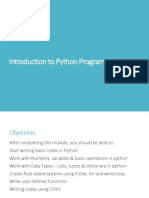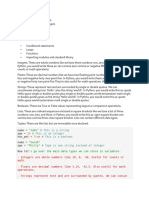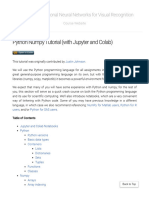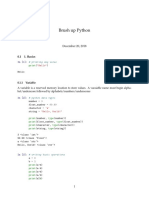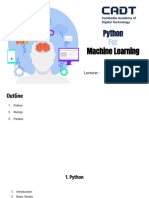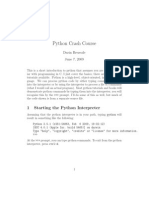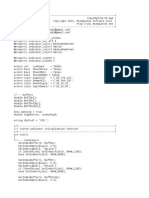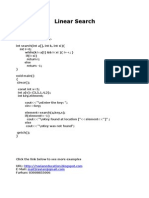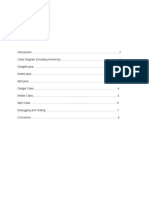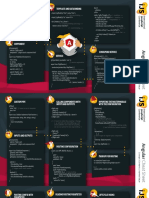0% found this document useful (0 votes)
30 views11 pagesPython Notes Unit 1 and 2
This guide provides a comprehensive overview of Python programming, covering its basics, data structures, operations, conditional statements, loops, and comprehensions. It also introduces Object-Oriented Programming (OOP) principles, including classes, inheritance, and the use of arrays in Python with indexing, slicing, and iteration. The document includes practical examples to illustrate the concepts discussed.
Uploaded by
vsvaibhav980Copyright
© © All Rights Reserved
We take content rights seriously. If you suspect this is your content, claim it here.
Available Formats
Download as PDF, TXT or read online on Scribd
0% found this document useful (0 votes)
30 views11 pagesPython Notes Unit 1 and 2
This guide provides a comprehensive overview of Python programming, covering its basics, data structures, operations, conditional statements, loops, and comprehensions. It also introduces Object-Oriented Programming (OOP) principles, including classes, inheritance, and the use of arrays in Python with indexing, slicing, and iteration. The document includes practical examples to illustrate the concepts discussed.
Uploaded by
vsvaibhav980Copyright
© © All Rights Reserved
We take content rights seriously. If you suspect this is your content, claim it here.
Available Formats
Download as PDF, TXT or read online on Scribd
/ 11






